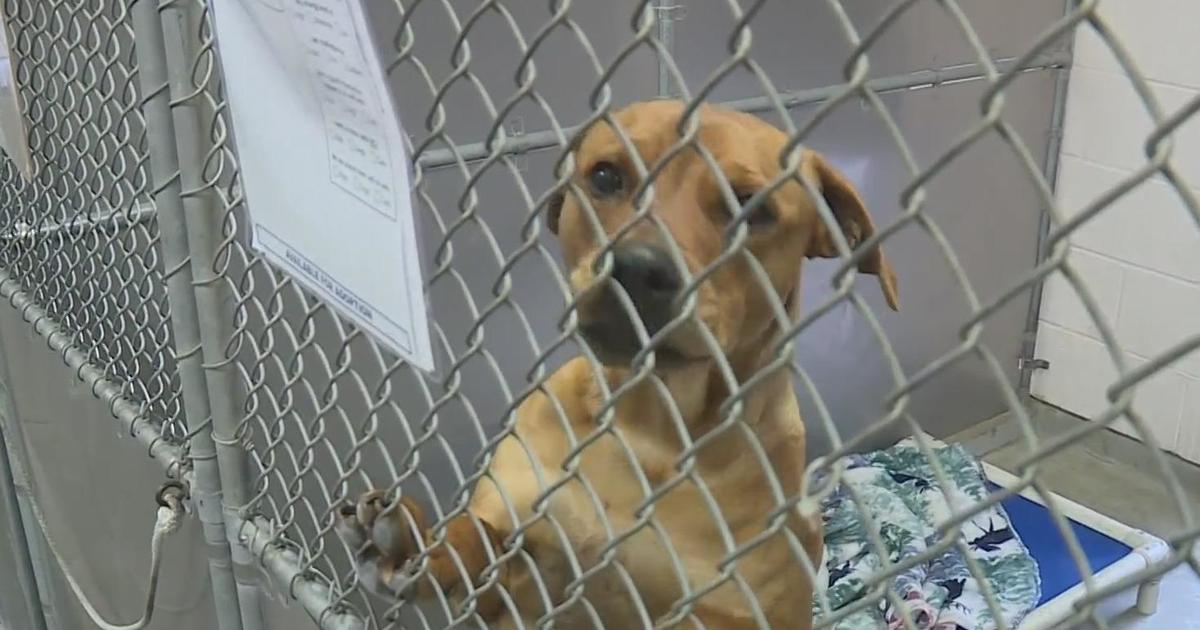Stimulus Check Update: Economic Impact Payments Are On The Way
(CBS Detroit) -- The third stimulus check is already arriving. As of Wednesday, the Internal Revenue Service (IRS) had delivered its first batch of checks, numbering 90 million and valued at $242 billion. That's just shy of its stated goal of delivering 100 million checks in 10 day, starting Monday.
President Biden signed the $1,400 relief payment into law last week, as part of his $1.9 trillion economic relief package. The American Rescue Act is designed to ease COVID's economic fallout and support the economy while it fights the pandemic. The package also contains extended unemployment benefits, an improved child tax credit, and much more. While many people have already received their allotted share of the $422 billion earmarked for stimulus checks, the timeline for others remains uncertain. Multiple factors could contribute to the uncertainty.
When Could My Stimulus Check Arrive?
The American Rescue Plan Act became law last Thursday. That beat the March 14 deadline, when the previous $300 federal unemployment benefit bonus expired. The IRS, having twice worked through the process of distributing payments, was ready to start it again immediately. And people have already noted economic impact payment (EIP) deposits in their bank accounts. Early recipients tended to be people who have bank accounts on file and submitted recent tax returns.
The President has stated that roughly 85 percent of Americans will ultimately receive money. In general, direct deposits arrive more quickly, many over the course of this week. Paper checks and debit cards, which have to be mailed, could take quite few weeks. At least that was the case for the previous two payments. Payments go out in batches, meaning there's little cause for concern this early in the process. The legislation says the government technically has until the end of the year to distribute the money.
The IRS has a helpful tool called Get My Payment to let people track the status of their stimulus check.
What Could Delay My Stimulus Check?
Some will inevitably experience delays in receiving their third stimulus check. The IRS is right in the middle of tax season. While CARES Act checks went out around the same time last year, the tax deadline was pushed from April 15 to July 15. The second stimulus check was distributed before the 2020 tax season began. This time, though, the IRS is handling the dual burden of distributing millions of relief payments while accepting and processing millions of tax returns. It's been reported that the tax deadline will be pushed until mid-May, which could relieve some of the burden.
Sending out periodic Child Tax Credit checks is another task that will fall to the IRS. But that isn't due to to start until July.
Aside from institutional delays, a whole host of personal factors could play into when someone's money actually arrives. Most of them stem from what information the IRS has on file for you and how they're allowed to use it.
The IRS needs to have current bank account information, which they've used to issue a tax refund. They can't make a payment to someone using an account and routing number they previously only used to accept payment. The IRS also requires up-to-date earnings and personal information to issue the proper payment. For the first stimulus check, that came from 2018 or 2019 tax filings. For the second stimulus check, it came from 2019 tax filings. The IRS is pulling that information from 2019 or 2020 tax filings this time around.
So anyone who doesn't have up-to-date information on file with the IRS could be looking at delays. That may include someone who recently moved or changed banks. It might also include someone who hasn't filed a tax return for 2019 or 2020. Many people don't file tax returns because they don't make enough money to pay taxes. Not coincidentally, these are also generally the people who most need stimulus payments.
The IRS had previously created a website for those who don't file, allowing people to update their bank account information and addresses as well as the number of dependents they claim. But that site is currently unavailable. Agency officials are telling non-filers to submit a tax return for 2020 to ensure they are paid what they are owed.
Those whose dependent status has changed -- perhaps because of a child born last year or a dependent family member who now qualifies for stimulus -- may also face delays or incorrect payments. The IRS won't know about a 2020 baby until the parents submit their 2020 taxes. So they would issue $2,800 to a married could who welcomed their first child last year but had yet to file. Once those parents submit their 2020 taxes, the agency would automatically send out an additional $1,400.
A similar issue could arise with families who don't typically file but used the non-filer tool to update their dependent count last year. Dependents above the age of 16 weren't previously included, so the IRS won't have them on record. Filing a return for 2020 could ensure that they do.
Certain banks have policies that can delay the arrival of stimulus via direct deposit. Some JPMorgan Chase and Wells Fargo customers expressed dismay that money the government sent out over the weekend took until Wednesday to arrive in their accounts. The settlement date for the first batch of ACH transfers was March 17, meaning that was the day that the money was officially available to banks. Some banks, however, credited the money to their customers in advance. Others, like the two financial institutions receiving complaints, waited until the money actually arrived. The same scenario could hold up payments the next time around.
Another potential delay stems from the method people use to file their taxes. Those who submit returns by mail may also experience delays in receiving their stimulus payment. Paper returns take longer to process than electronic returns, and the agency is experiencing a backlog brought on, at least in part, by the pandemic. As with most office workers, many IRS employees have had to do their jobs from home. Paper returns were inaccessible and sat waiting in trailers. About 6.7 million returns had yet to be processed by the end of January.
What Could Reduce My Stimulus Check?
The topline $1,400 number that's drawn so much attention won't necessarily be what people receive. The actual amount could change based on income restrictions, the number of dependents and other factors.
The previous two stimulus checks phased out for individuals with an adjusted gross income (AGI) over $75,000 per year and married couples with an AGI over $150,000. (AGI is the total of one's wages, interest, dividends, alimony, retirement distributions and other sources of income minus certain deductions, such as student loan interest, alimony payments and retirement contributions.) For every dollar of income over the threshold, the previous two stimulus payments decreased by five percent. So the $1,200 payment from the CARES Act shrank to $0 for incomes over $99,000 ($198,000), and the $600 from the second stimulus shrank to $0 for incomes over $87,000 ($174,000).
This stimulus package phases out checks more quickly. So while the threshold remains at $75,000 ($150,000), those earning $80,000 ($160,000) or more will receive nothing. If the phase out progresses at a constant rate, that would mean people would receive $.28 less for every $1 they earned over the limit. Put another way, that means those with an AGI of $76,000 should receive $1,120, and that total would fall by $280 for every addition $1,000 of income.
The idea behind targeting stimulus checks to reach lower-income people is to better ensure that the money gets spent in the broader economy rather than saved. According to a survey from the Federal Reserve Bank of New York, the average percentage of the first stimulus payment that a household spent on essentials decreased as income increased. The average percentage of the first stimulus payment that a household saved increased as income increased.
While speeding up the phase out better targets the economy, it also reduces the number of people receiving a third stimulus check and the amount received by others. Upwards of 30 million CARES ACT payments went to households with incomes above $75,000. Assuming they have at least the same income, most of them will not receive a check with the faster phase out. Those earning between $75,000 and $80,000 will receive less than the full $1,400.
Why Do We Need Stimulus Checks?
The economy shrank by 3.5 percent in 2020, the largest single-year decline since the end of World War II. Weekly unemployment figures remain historically high, with approximately 712,000 people initially applying for unemployment insurance in the first week of March. (For reference, a typical pre-pandemic week saw about 250,000 new unemployment applications.) An additional 478,000 sought Pandemic Unemployment Assistance.
Approximately 20 million people were receiving unemployment benefits of one kind or another as of late February. That's about one out of every nine workers. While the official unemployment rate is 6.2 percent, the actual rate is probably closer to 10 percent, given all the people who have dropped out of the labor force. On the bright side, employers added another 379,000 jobs last month.
An economic bounceback depends on the widespread distribution of a COVID vaccine. And efforts to inoculate the public are progressing. Shortages and winter weather had forced some areas to temporarily close vaccination centers and scale back administering the vaccine. Many who qualify had faced problems in scheduling appointments. Nevertheless, Americans have received over 113 million doses, with 22.2 percent of the population having received at least one dose and 12 percent completely vaccinated. Vaccination numbers continue to increase at a rate of about 2.4 million doses per day.
The Food & Drug Administration recently authorized Johnson & Johnson's one-shot vaccine, with millions of doses already shipped. Biden has recently stated that the country will have enough doses to vaccinate all Americans by May. Actually putting needles in arms will likely take longer. Mask-wearing and a general lack of normalcy could continue into 2022. Currently, domestic COVID cases exceed 29.5 million, while deaths have climbed past 538,000.
Originally published February 4 @ 6:06 p.m. ET.



